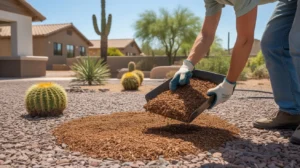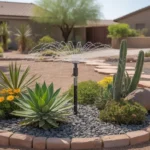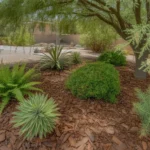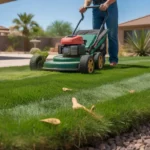As the scorching Arizona summer reaches its peak, it’s the perfect time to reevaluate your Southeast Valley yard’s mulch situation. By mid-summer, much of that carefully applied spring mulch may have broken down, blown away, or simply lost its luster. But don’t worry – a well-timed mulch refresh can revitalize your yard, suppress weeds, retain moisture, and keep your soil healthy through the intense heat. Here’s your masterclass in the art of the mid-summer mulch lock-in.
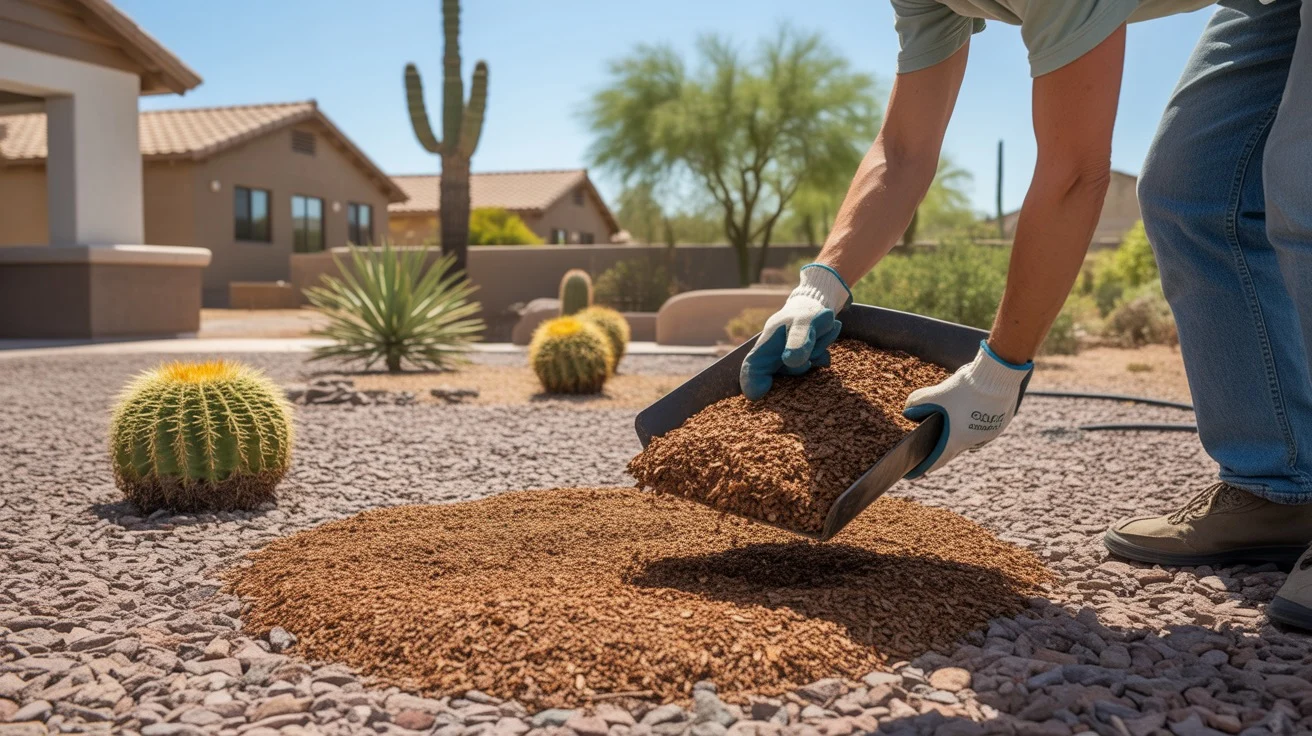
Why Mid-Summer Mulch Matters in the Southeast Valley
While spring mulching is a well-known best practice, many Southeast Valley homeowners overlook the importance of a mid-summer mulch refresh. By July, that springtime mulch has been working hard for months, buffering your soil from the unrelenting sun, wind, and occasional monsoon rains. As it breaks down, it enriches the soil with organic matter – but it also becomes less effective at its other key jobs.
A fresh layer of mulch in mid-summer can:
- Suppress weed growth during the rainy season
- Insulate soil and roots from extreme heat
- Slow evaporation to conserve water
- Prevent soil erosion and compaction
- Give your landscape a tidy, well-maintained look
In the intense Southeast Valley summer conditions, that extra layer of protection can be a lifesaver for stressed plants, trees, and grass. It’s like giving your yard a refreshing mid-summer boost.
Choosing the Right Mulch for a Mid-Summer Refresh
For a mid-summer mulch refresh, you’ll want to choose a material that can handle the heat and monsoon rains. Opt for coarse, woody mulches like shredded bark or wood chips rather than finer materials like grass clippings or straw. Coarse mulches allow better air circulation, which is crucial in the humid monsoon season. They’re also less likely to blow away or wash out in summer storms.
In the Southeast Valley, inorganic mulches like gravel or crushed rock are also popular choices for their heat and moisture resistance. They’re excellent for use around succulents, cacti, and other desert-adapted plants. However, keep in mind that rock mulches don’t enrich the soil like organic materials do.
Whichever mulch you choose, look for a high-quality product from a reputable local supplier. Avoid mulches with an unpleasant odor, as this can indicate improper composting or contamination. Your mulch should have a clean, earthy smell.
How to Apply a Mid-Summer Mulch Layer
Before adding new mulch, take a moment to assess your existing mulch layer. If it’s matted, compacted, or harboring weed growth, use a rake or cultivator to loosen it up and remove any unwanted plants. This will help the new mulch integrate better and allow water to penetrate the soil.
When applying your new mulch layer, aim for a depth of 2-4 inches. A thin layer won’t provide much benefit, while an overly thick layer can suffocate roots and prevent water infiltration. Use a measuring tool like a ruler or marked stake to ensure even depth throughout the bed.
Always keep mulch a few inches away from the base of trees, shrubs, and stems to prevent rot and disease. Think “doughnut” rather than “volcano” – you want a nice, wide ring of mulch with space around the trunk or stem.
Troubleshooting Common Mid-Summer Mulch Issues
Even with a fresh layer of mulch, mid-summer yard issues can still crop up. Here are some common problems and how to solve them:
Problem: Mulch is washing away or blowing out of beds.
Solution: Use coarse, heavy mulches like bark chips or gravel. Consider edging your beds with stones or pavers to keep mulch contained.
Problem: Weeds are growing through the mulch.
Solution: Ensure your mulch layer is deep enough (2-4 inches). Pull any visible weeds and spot-treat with a natural herbicide like vinegar or boiling water.
Problem: Mulch is developing an unpleasant odor.
Solution: A sour smell can indicate anaerobic decomposition. Turn the mulch with a rake or pitchfork to introduce oxygen, and avoid overwatering. If the odor persists, remove the mulch and replace it with a fresh batch.
Problem: Mulched beds are staying too wet.
Solution: Ensure your mulch depth isn’t too thick, and avoid fine-textured mulches that can mat and retain excess moisture. Improve drainage by aerating the soil and mixing in coarse sand or perlite.
Maintaining Your Mid-Summer Mulch Lock-In
Once your mid-summer mulch refresh is complete, regular maintenance will help it look and function its best. Water mulched beds deeply but infrequently to encourage roots to grow down into the cooler, moister soil below. Aim for about 1 inch of water per week, adjusting for rainfall and your soil type.
Keep an eye out for any bare or thin spots, and top up the mulch as needed. If you notice any signs of pests or disease, address them promptly to prevent spread. A monthly walk-through of your mulched beds can help you catch any issues early.
With a well-executed mid-summer mulch lock-in, your Southeast Valley yard will be better equipped to handle the intense heat and monsoon rains. You’ll be rewarded with healthier plants, fewer weeds, and more efficient water use – all while enjoying a tidy, low-maintenance landscape. So don’t let that spring mulch languish – give your yard the mid-summer refresh it needs to thrive.

